Introduction
In today's dynamic digital marketplace, launching a successful online retail store requires more than just a great product and a catchy website. To thrive, businesses must adopt a strategic approach that encompasses identifying a niche market, selecting the right products, choosing an appropriate e-commerce platform, and building a user-friendly website. This comprehensive guide delves into the essential steps for setting up an online store, from determining your target audience and product line to integrating secure payment and shipping options.
It further explores effective marketing strategies, including SEO, social media, and email campaigns, to enhance brand visibility and drive sales. Finally, it underscores the importance of ongoing optimization and data-driven decision-making to ensure long-term growth and customer satisfaction. By following these expert recommendations, aspiring e-commerce entrepreneurs can navigate the complexities of the digital retail landscape and achieve sustainable success.
Determine Your Niche and Target Audience
Identifying a specific niche is paramount for your online retail store's success. Conduct comprehensive market research to understand emerging trends and consumer needs. Utilize data science to analyze consumer behavior across multiple touchpoints, from clicking on advertisements to making purchases and leaving reviews. This data can help you uncover market gaps by examining competitors and identifying underserved areas.
Tailor your offerings to a well-defined target audience based on demographics, interests, and purchasing behavior. By utilizing consumer profiles and buying behaviors obtained from data analysis, you can strategically place your offerings to satisfy the specific requirements of your clients. This approach not only aids in acquiring new clients but also in preventing attrition and basket abandonment.
As an eCommerce retailer, you sit on a goldmine of data that provides actionable insights. 'This data-focused approach allows for efficient and tactical targeting of both new and existing clients, ultimately assisting in lowering the bottom line and enhancing your offering strategy.'. To illustrate, companies that have successfully implemented data science in their retail strategies have seen significant improvements in client acquisition and retention.
Incorporate tools like Amazon Bestsellers to gauge what items are in demand and identify popular niches. Search for gaps where rivals are not fulfilling consumer demands, particularly in profitable sectors such as health, wealth, and relationships. Comprehending the market size and demand for your offering or service is essential. For instance, the eCommerce market, including both online-only and hybrid businesses, has been rapidly growing, enabling enterprises to connect with consumers globally and boost sales.
In summary, a data-informed approach to identifying and targeting a specific niche can significantly enhance the success and growth of your online retail store.
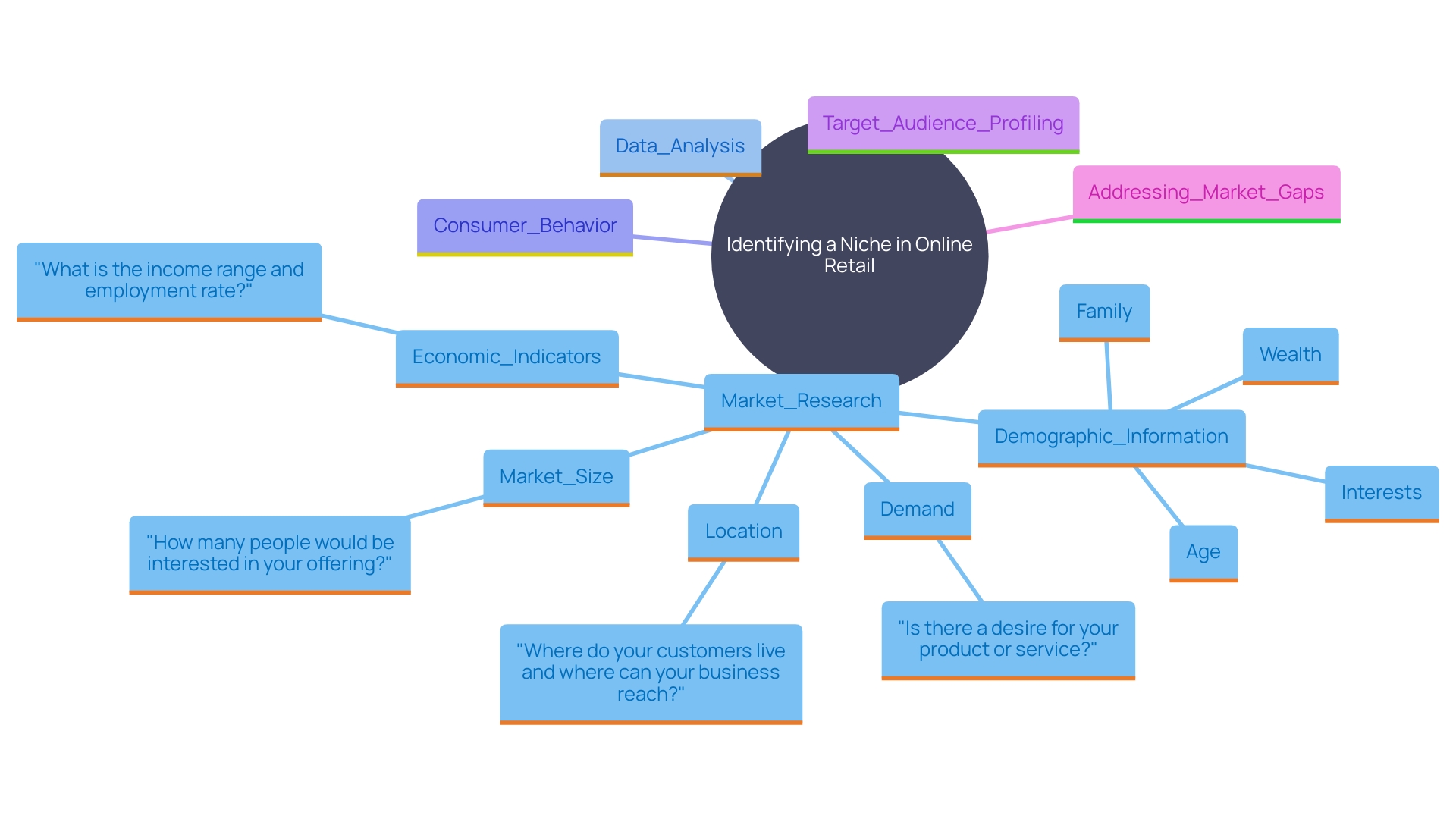
Choose Your Product Line
Choosing the appropriate items is essential for your niche and target audience. Begin by identifying items that align with your brand and appeal to your customer base. Assess potential suppliers carefully to ensure high quality of goods. Consider key factors like competitive pricing, shipping times, and inventory management. Effective inventory management is vital, especially in dealing with disruptions such as geopolitical tensions and regulatory changes. 'According to a Capgemini report, constructing robust and efficient supply chains is crucial for the consumer goods and retail sector.'. The rise of eCommerce, which now spans 14 different markets from beverages to household essentials, emphasizes the need for a balanced range of items that can adapt to both growth opportunities and seasonal trends. Data science can be a powerful tool here, providing insights into consumer behavior and helping to reduce issues like customer churn and basket abandonment. Using data effectively can illuminate the path to better decision-making and strategic targeting, ultimately enhancing your eCommerce platform's performance.
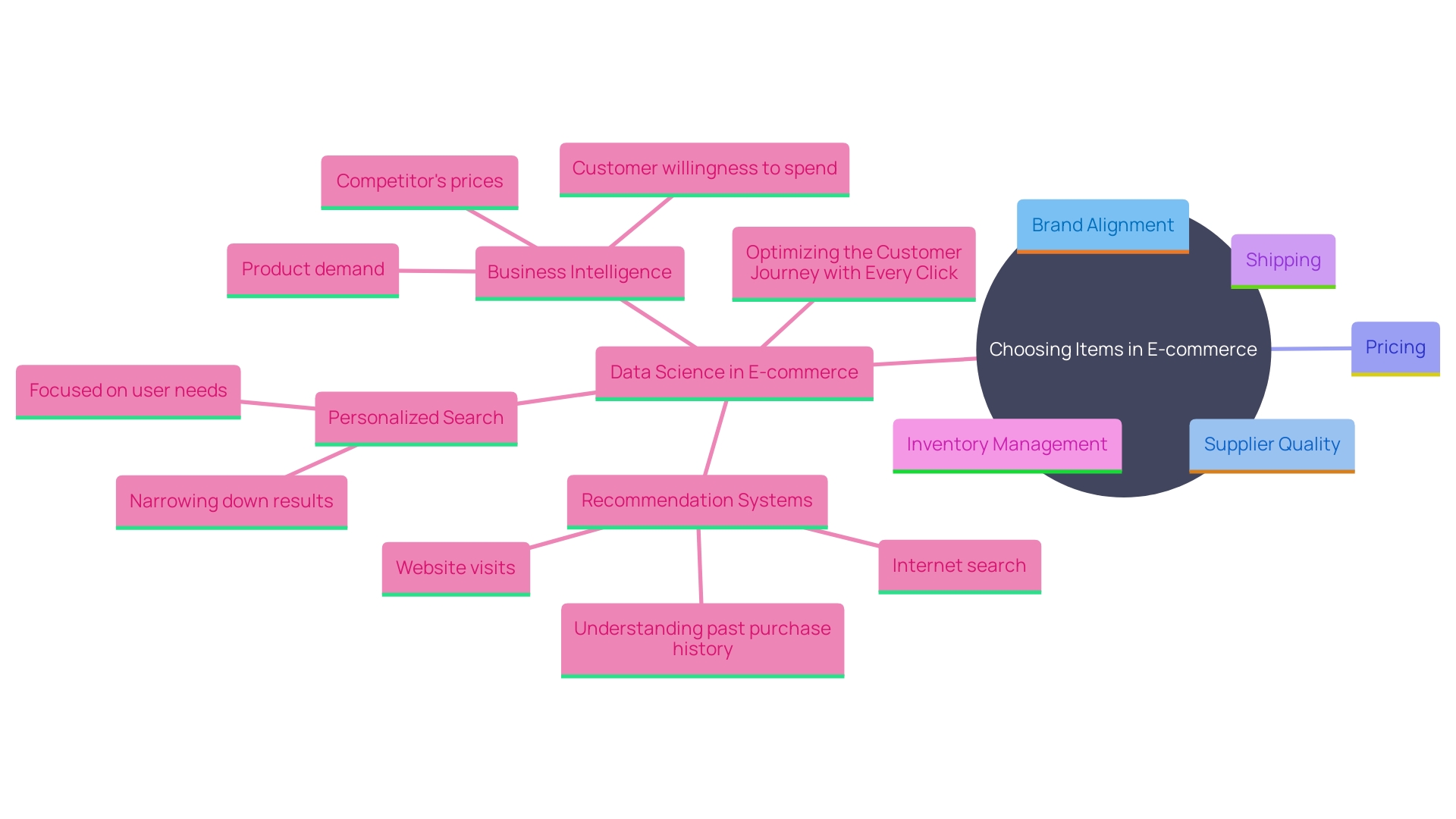
Choose an E-commerce Platform
When considering e-commerce platforms, it's essential to evaluate options like Shopify, WooCommerce, and Bigcommerce. Shopify stands out as a leading platform, powering over half a trillion dollars in global commerce for millions of merchants across 175 countries. Its speed, flexibility, and scalability make it a favorite among both small businesses and large enterprises.
WooCommerce, another popular choice, is an open-source platform that integrates seamlessly with WordPress, offering extensive customization options. Bigcommerce is renowned for its robust functionality and built-in features that support complex operations.
When choosing a platform, assess features such as ease of use, payment gateways, and scalability. Shopify, for instance, offers a user-friendly interface and supports various payment options, making it easy to set up and manage an online store quickly. It also provides a trial period to help you decide if it suits your business needs.
Ultimately, select a platform that aligns with your business model and technical expertise, ensuring it can scale with your growth plans. With the right choice, your e-commerce venture can thrive in the competitive digital marketplace.
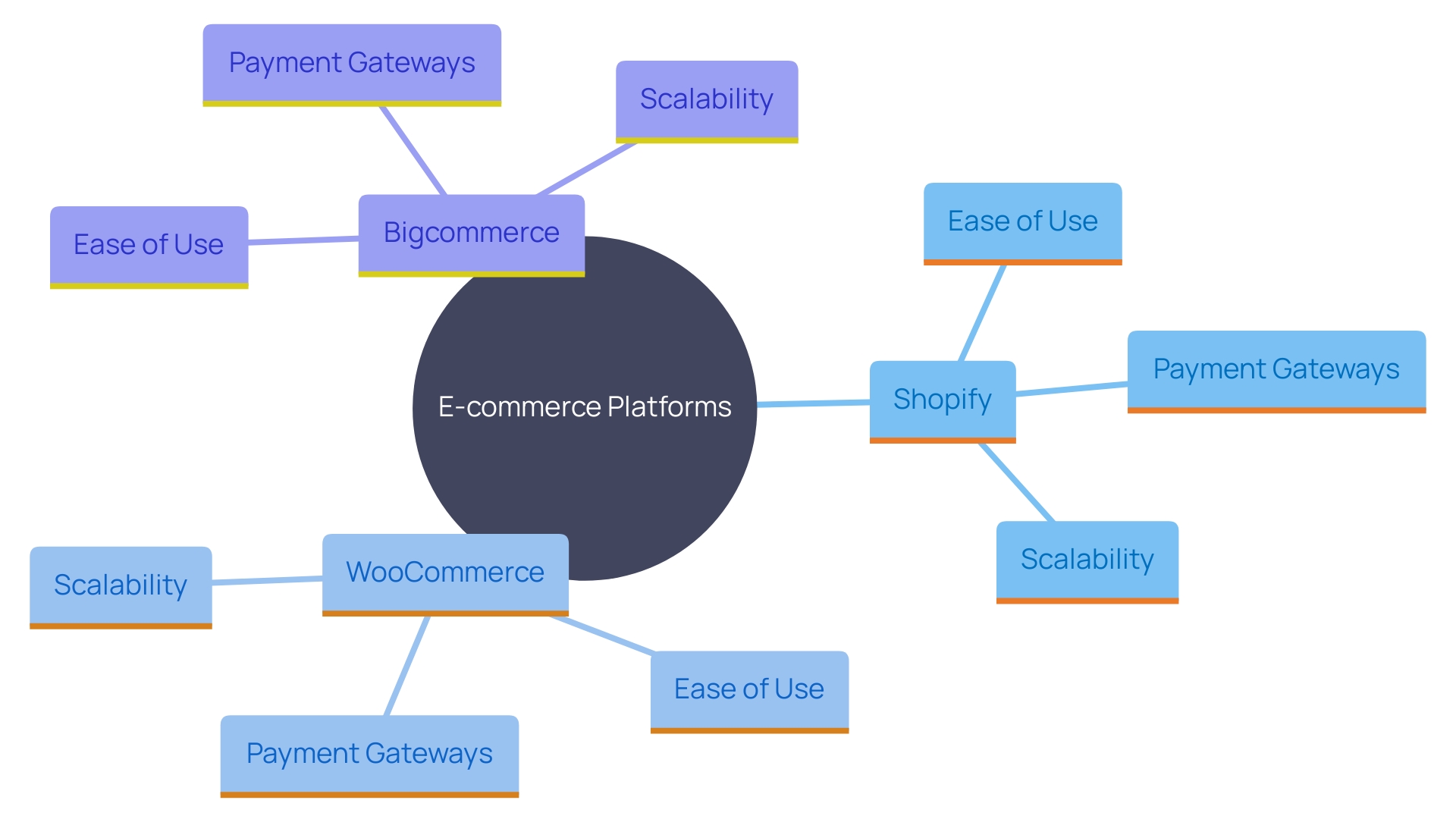
Build Your E-commerce Website
Designing a user-friendly and visually appealing website is crucial for the success of an e-commerce platform. In today's competitive digital landscape, aesthetics and functionality go hand in hand. Ensure that your platform uses high-quality images and detailed product descriptions to effectively showcase your offerings. Responsive design is non-negotiable, as over half of all website traffic comes from mobile devices. In fact, mobile sites loading in two seconds or less have a 15% higher conversion rate than average mobile sites.
Navigation should be intuitive, with essential features like search bars, filters, and customer reviews prominently displayed. This not only improves the experience of individuals but also stimulates engagement and sales. Based on current data, 61% of individuals will switch to a different platform if they don't discover what they seek immediately, and 74% are more inclined to revisit a mobile-compatible platform.
Adopting an evolutionary design approach can further enhance your online presence. By making incremental improvements based on feedback and testing, you can continuously enhance the experience without the risks associated with radical redesigns. Understanding UI/UX design as an iterative process allows you to adapt to changing user preferences and technological advancements, ensuring your site remains relevant and effective.
Set Up Payment and Shipping Options
Integrate secure payment gateways like Stripe to offer clients multiple payment options and enhance their experience. The integration of Stripe, for instance, touches on several critical aspects like payment proposals, aliases, captures, refunds, reconciliation, and fraud analysis, ensuring a seamless and secure transaction process. This type of integration not only fulfills client expectations but also streamlines the management of payments across various regions, addressing the global requirements of an e-commerce platform.
Researching and selecting reliable shipping providers is equally crucial. Establish clear and transparent shipping policies and rates to build trust among clients. Providing complimentary or fixed-rate delivery choices can greatly enhance conversion rates, as buyers value the transparent information on shipping expenses. Additionally, ensure transparency in delivery times to manage client expectations and enhance their overall shopping experience. Real-time tracking and clear communication about delivery schedules can further cement customer trust and satisfaction.
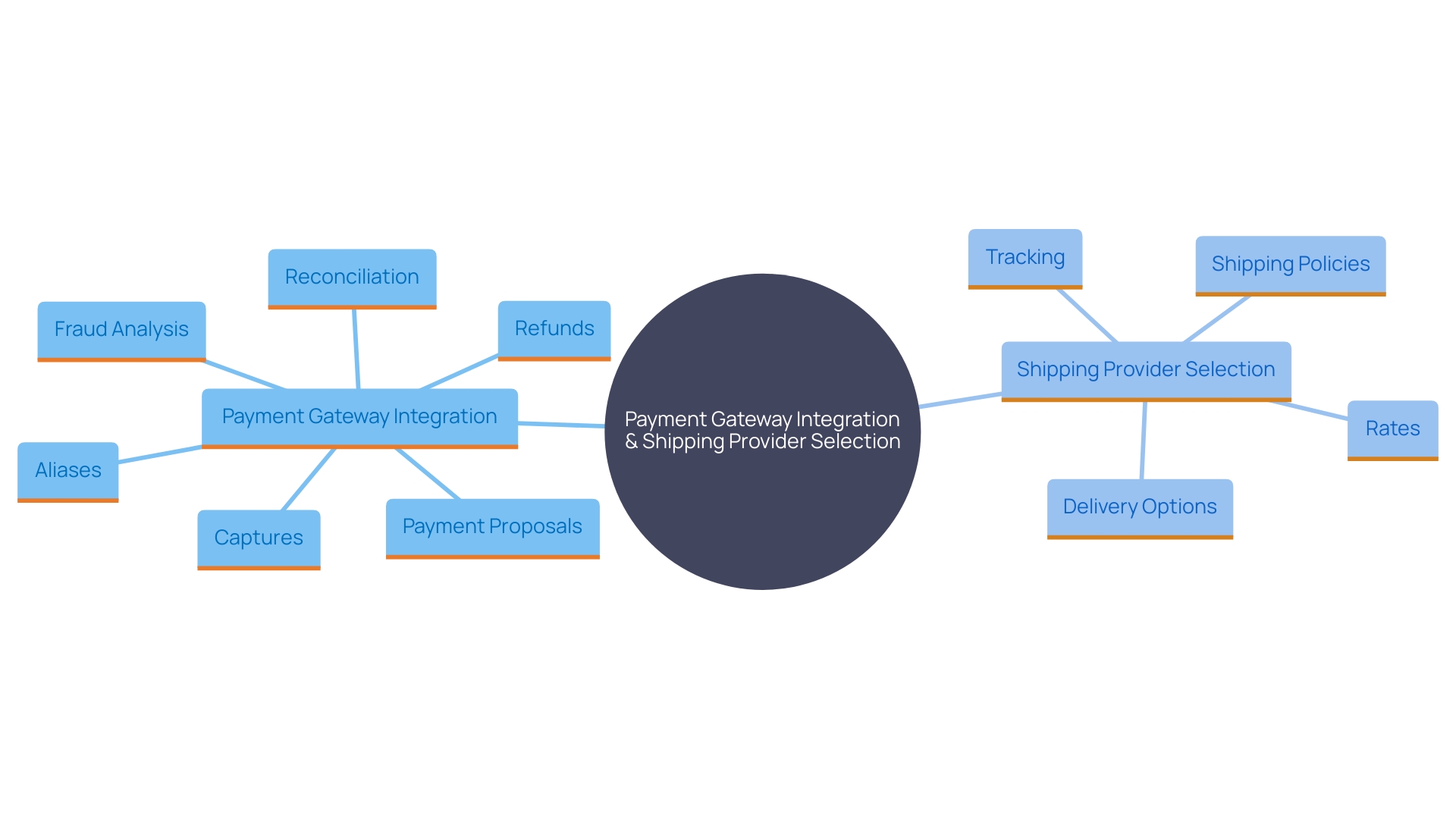
Market Your Products and Brand
Developing a comprehensive marketing strategy for your e-commerce business is essential to stand out in a competitive market. Begin with a strong SEO strategy, concentrating on enhancing your platform according to Google’s guidelines, as Google holds more than 93% of the market share. Effective SEO not only improves your site's visibility but also builds trust and authority, driving more traffic and thereby increasing revenue.
Conduct thorough keyword research. Approximately 93% of online experiences begin with search engines, so understanding the queries and preferences of your target audience is crucial. Look for keywords with high search volume, low ranking difficulty, and high purchase intent using tools like keyword planners.
Leverage social media marketing and content marketing to connect with your audience. Compelling material that connects with your audience can greatly improve your brand's visibility. With the rise of generative AI, creating optimized content faster is possible, but ensure it meets both traditional and AI-driven search engine requirements.
Email campaigns remain a vital tool. Tailored emails can cultivate leads and transform them into devoted clients. Combine this with paid advertising to reach a broader, targeted audience. Platforms like display ads, search engines, and social media offer cost-effective ways to promote products, especially for small businesses.
Regularly monitor analytics to refine your strategies. The e-commerce industry is ever-evolving, characterized by rapid technological advancements. To remain competitive, adjust your strategies based on data and feedback to consistently enhance conversion rates and client engagement.
By integrating these elements—SEO, social media, content marketing, email campaigns, and paid advertising—into your marketing strategy, you can enhance your e-commerce platform's performance and achieve sustainable growth.
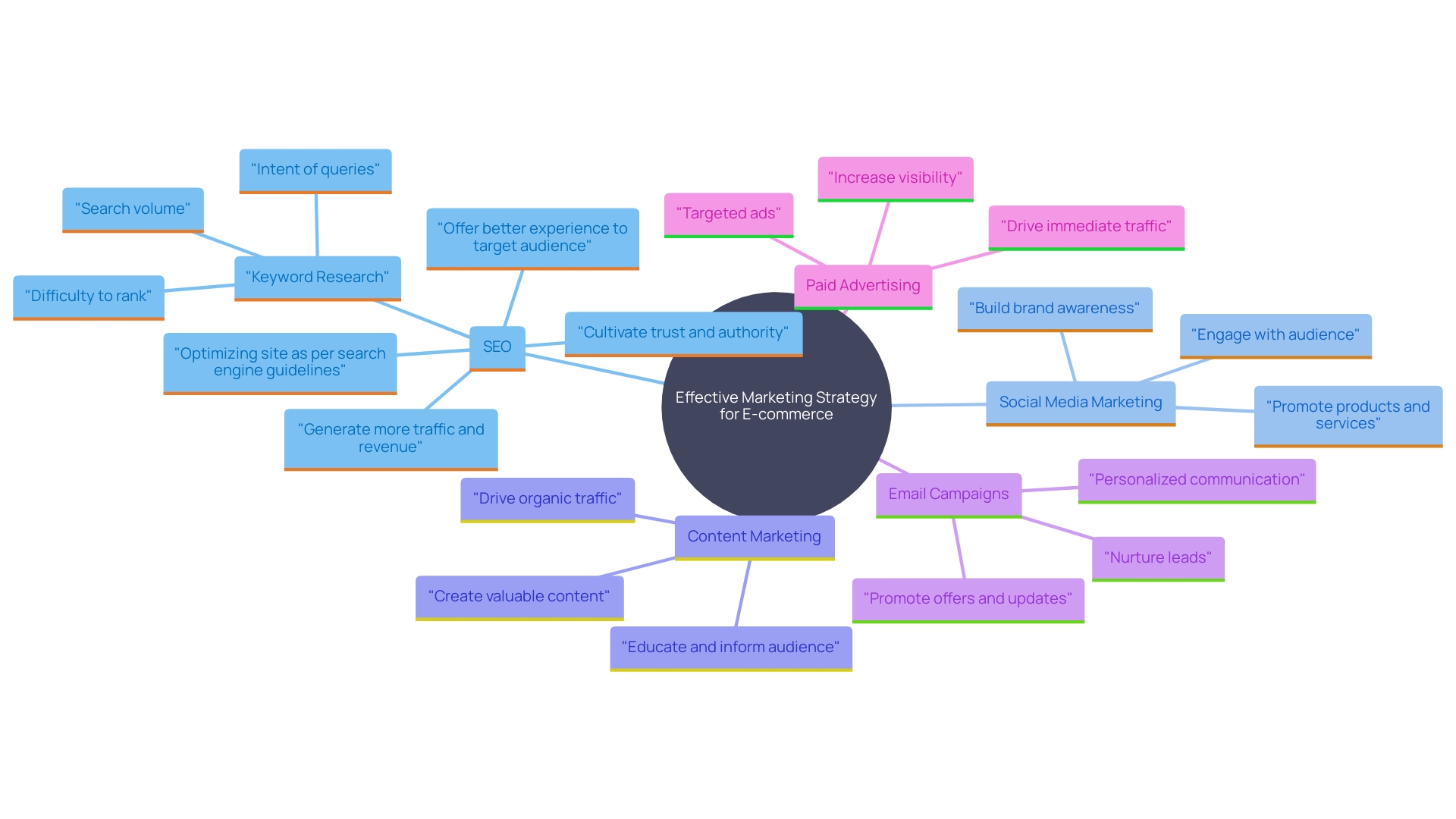
Launch Your Online Store
Before launching, meticulously test every aspect of your website to ensure it functions seamlessly. This includes verifying payment processing and checkout flows, which are essential for client satisfaction and trust. Additionally, ensure that your inventory system is robust and synchronized with your website to avoid stock discrepancies.
Creating a buzz for your launch is equally important. Utilize social media platforms and email marketing to generate excitement and attract initial traffic. With over 4.26 billion email accounts worldwide, email marketing continues to be one of the most lucrative types of marketing, providing the greatest return on investment. Social media, with its vast reach, can also significantly boost your visibility and engagement, ensuring a successful start for your online retail or dropshipping business.
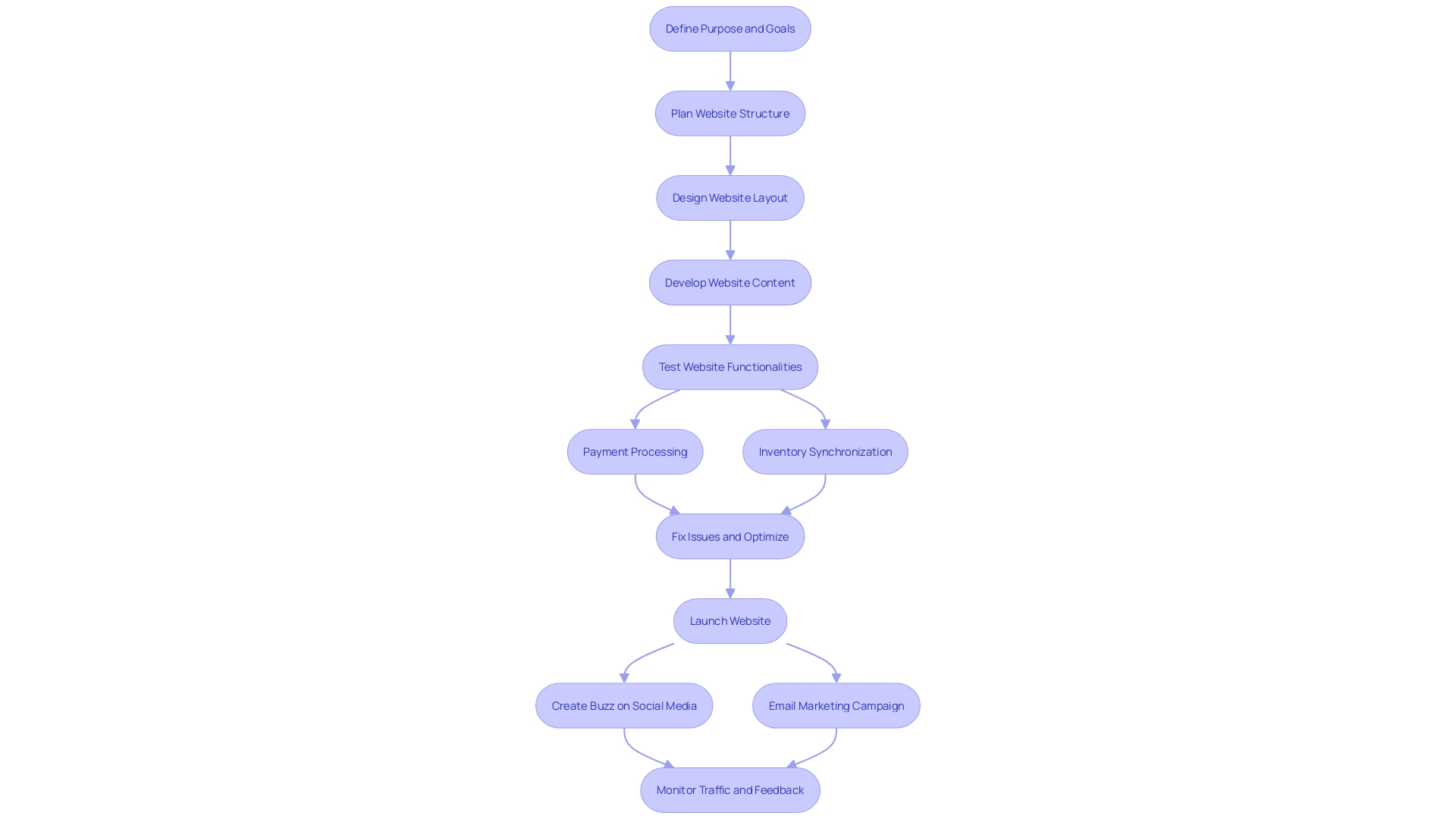
Optimize Your Store for Success
After launching, it is crucial to consistently observe and evaluate website performance and user feedback utilizing sophisticated analytics tools. These tools allow you to monitor behavior patterns, sales trends, and conversion rates effectively. For instance, a case study on Whiskique, a fictitious online pet supply company, demonstrated how data analysis could identify customer purchasing patterns and item pairings, leading to improved sales strategies.
Utilizing these insights, you can implement data-driven changes to improve customer experience and optimize product offerings. Data analytics technology is essential for Conversion Rate Optimization (CRO), aiding in the transformation of underperforming websites by enhancing visitor experience and increasing productivity. Unsatisfactory experience and slow websites can deter visitors, which is harmful to business growth.
Moreover, understanding mobile user experience is paramount. Statistics indicate that more than 50% of prospective clients will forsake a brand with a poorly designed mobile platform. 'Mobile pages that load within two seconds have a 15% higher conversion rate, emphasizing the need for performance and speed over elaborate design elements.'. Additionally, 74% of users are more likely to return to a mobile-friendly site, and 67% are more inclined to make a purchase.
By applying these insights, you can strategically target new and existing clients, reduce churn rates, and prevent basket abandonment. Continually refining your e-commerce platform based on data-driven decisions will not only enhance customer satisfaction but also position your business for sustained growth and success.
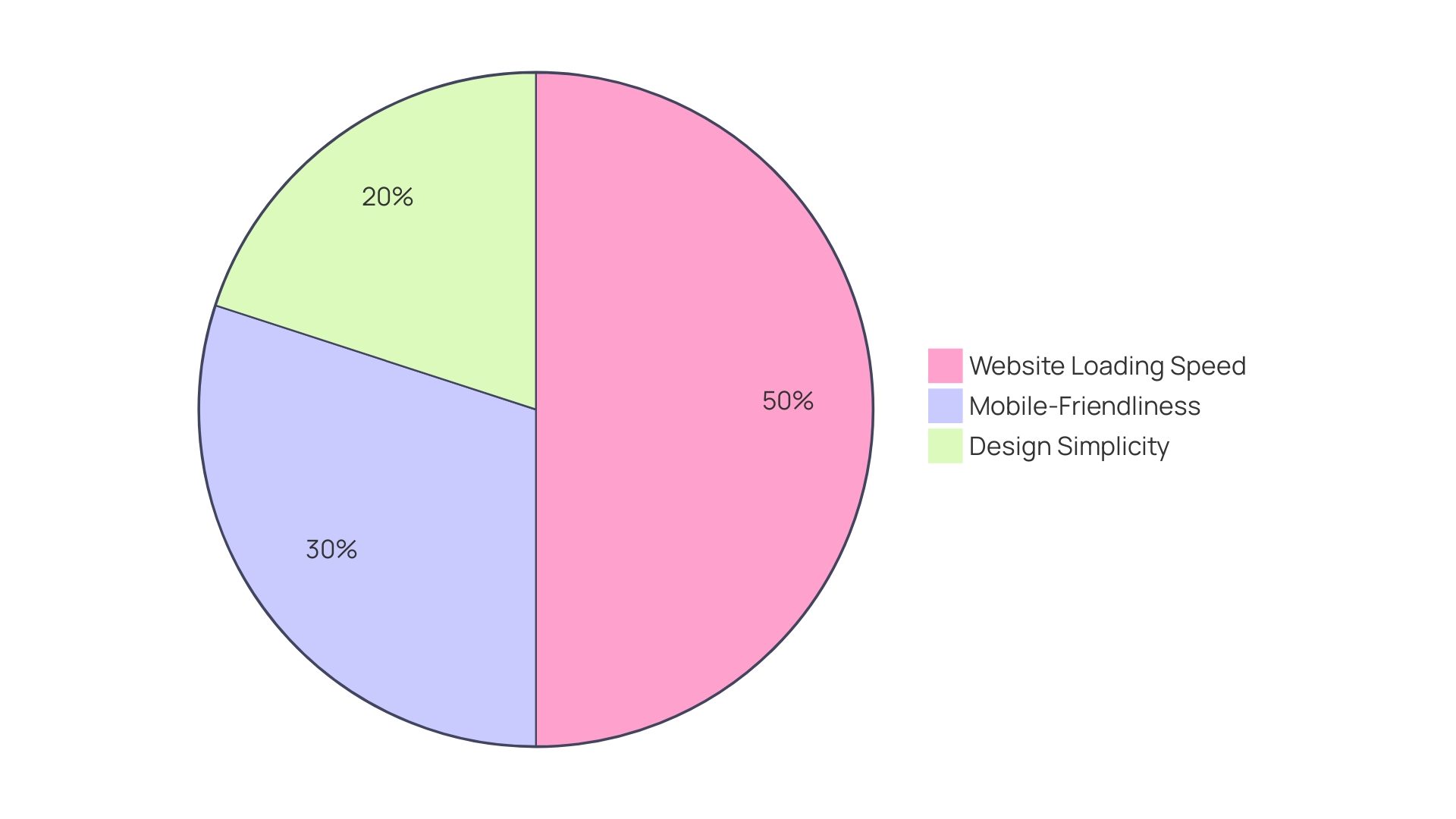
Conclusion
Successfully launching and managing an online retail store hinges on a series of well-defined strategies that address every aspect of the e-commerce landscape. From identifying a niche market and understanding consumer behavior to selecting the right products and e-commerce platform, each step plays a crucial role in establishing a strong foundation for business growth.
Building a user-friendly website with optimized payment and shipping options is essential for ensuring a seamless customer experience. Effective marketing strategies, including SEO, social media, and email campaigns, further amplify brand visibility and drive sales. By continually monitoring analytics and refining strategies based on data insights, businesses can adapt to market changes and customer preferences, ensuring they remain competitive in an evolving digital marketplace.
Ultimately, the key message is clear: a strategic, data-driven approach to e-commerce not only facilitates initial success but also fosters long-term growth and customer loyalty. By prioritizing these essential elements, aspiring e-commerce entrepreneurs can navigate challenges with confidence and drive their businesses toward sustainable success.





